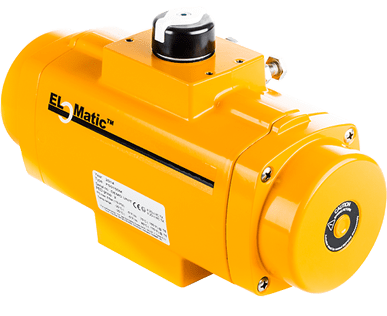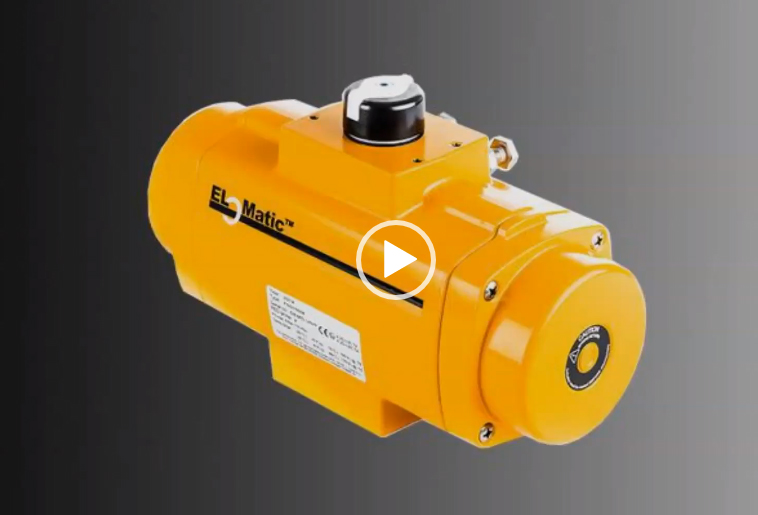What Is An Actuator
Leave a Comment Actuators are mechanical or electromechanical devices that use a power source to drive controlled movement and positioning of industrial and mechanical equipment. While there is a wide range of actuators available, they can generally be categorized into two basic classifications:
Actuators are mechanical or electromechanical devices that use a power source to drive controlled movement and positioning of industrial and mechanical equipment. While there is a wide range of actuators available, they can generally be categorized into two basic classifications:
- Linear actuators convert energy into linear motion. They have push and pull functions that operators use for positioning. While many linear actuators are electrically powered, some are manually powered by rotational hand wheels and knobs. One example of a linear actuator is a chain wheel system, which pushes and pulls a hand wheel. These are used on gate, globe and pinch valves.
- Rotary actuators convert energy into rotary motion. Some of the most common applications for rotary actuators include opening and closing ball valves, butterfly valves and plug valves.
Actuators find use throughout industry in a variety of mechanical applications. Manufacturers design and produce different types based on the power demands, operational environment, and size requirements of these applications, resulting in a wide selection.
Choosing the right actuator type for a particular application requires understanding both how actuators work and the differences between the various types available. The following page outlines the basic working principles behind actuators and some of the commonly used types (and their respective characteristics).
How Do Actuators Work?
Actuators connect prime movers—e.g., motors or turbines—to loads through the integration of power transmission components such as ball screws or rack and pinion arrangements. The type of motion the system produces and the type of motion the initial source provides does not have to be the same. For example, linear hydraulic cylinders can produce rotational movement through racks and pinions and a rotary actuator.
One of the most common uses for actuators is the remote operation of a valve. Different valves use different actuators based on the type of motion (and the amount of motion) needed to drive the valve open or shut. Valves use pneumatic, electric, hydraulic and several distinct manual actuators.
Types of Actuators
Actuators are available in a number of different types with varying operating mechanisms, configurations, styles, sizes, and best use cases. Some of the common types employed in industrial applications include:
Electric Linear Actuators
Electric linear actuators convert electrical energy into distinct push and pull motions along straight lines to cause linear displacement. At their most basic, electric linear actuators consist of linear guides, drive mechanisms (such as ball or lead screws, belts, or voice coils), and motors, which work together to provide the mechanical, electromagnetic, or thermally expansive force that causes the displacement.
Many industries use these systems for applications that require precise linear positioning, such as on processing lines or in automated operations. These actuators are also suitable for use in various equipment functions such as braking machines, locking doors, and opening or closing dampers.
Electric Rotary Actuators
Electric rotary actuators convert electrical energy into rotational motion. These actuators generally consist of motors and rotary travel shaft mechanisms and, like linear actuators, are suitable for use in precision positioning and control operations. Typical applications include controlling valves, robotics, windows, and gates.
These actuators can use different motors and voice coils, depending on the specifications of the application.
Fluid Power Linear Actuators
Fluid power linear actuators convert fluid power into linear motion. They consist of cylinders and pistons that allow them to harness the power produced by hydraulic fluid, gas, or differential air pressure setups.
Multiple industries use fluid power linear actuators to control positioning systems. Automated applications, in particular, rely on precise placement and positioning of objects. These automated systems use actuators to clamp components, control welding processes, and open or close dampers and doors.
Fluid Power Rotary Actuators
Fluid power rotary actuators are actuating devices that use a cylinder, gearing, output shafts, and pistons to generate limited rotational travel. This power drives rotational movement by converting pressure from hydraulic fluid and gas into mechanical energy.
These actuators provide precise positioning and movement to facilitate the completion of automated processes. Manufacturing systems use fluid power rotary actuators to clamp parts and components, move dampers and doors, and open or adjust valves.
Some of the key considerations to keep in mind when ordering actuators include:
- Actuator type
- Motion required and mode of operation
- Intended application
- Output and mounting configurations
- Force requirements
- Power supply, thrust or torque
- Rotational limitations
- Physical space limitations and workplace safety conditions
- Speed and frequency of operation
- On/off, throttling or proportional control
- Accessories, e.g., limit switches, positioner, solenoid, valve, transducers, manual override
Linear Chain Actuators
Linear chain actuators consist of sprockets (or driving gears) and chains which are used to produce fixed linear motion by pushing and pulling objects along the free ends of the chains. These actuators are available in a variety of sizes and chain styles with additional options such as chain storage compartments or straight lock attachments for rigid chains.
Facility managers can choose between many different linear chain actuators based on the following factors:
- Actuation length
- Chain size and type
- Drive methods and mechanisms
- Intended application
- Mounting configuration
Manual Linear Actuators
Manual linear actuators consist of hand-operated components—such as gearboxes, guided linear motion mechanisms, knobs, and hand wheels—which harness the manually generated power from the rotational movement of screws and gears. Despite harnessing energy from rotation motion, these actuating devices produce linear motion.
These actuators don’t have an attached power source. Instead, they rely entirely on the manual rotational power from knobs and hand wheels to operate. Based on the load and drive force requirements, your facility may make use of different types of manual linear actuators, including variants with belt drives, lead screws, racks and pinions, and other components. Facilities typically use manual linear actuators to drive the precise motion and movement of tools, workpieces, and equipment.
Different types of manual linear actuators offer different capabilities and power. Deciding on which type is best for your application requires considering the following specifications:
- Actuator type
- Drive mechanism
- Intended application
- Travel length
- Physical dimension limitations
Manual Rotary Actuators
Similar to manual linear actuators, manual rotary actuators use manually generated force to drive the precise movement of parts in industrial processes. However, the power output produced by harnessing the manual power input provided by knobs, levers, chain wheels, hand wheels and gear operators is rotational rather than linear.
These actuating devices are primarily used for opening, closing, and adjusting valves. Due to their ubiquity in valve applications, they are often called manual valve actuators or valve operators instead of manual rotary actuators. These actuators can drive motion for multiple varieties of valves, including ball, butterfly, check, and globe valves. In addition to their use with valves, manual rotary actuators also provide precise rotational motion for other applications and positioning.
Contact Erdmann Corp. Today
At Erdmann Corp., we provide a wide range of actuators to suit the existing valves in your facility’s system, your power output requirements, and other specifications.
To learn more about our selection of linear and rotary actuators, contact us today or request a quote to start your next order.


